What is Gate ransomware virus
The ransomware known as Gate ransomware is classified as a severe infection, due to the amount of harm it might do to your system. It’s likely you have never encountered ransomware before, in which case, you may be particularly surprised. Ransomware encrypts data using strong encryption algorithms, and once it’s done carrying out the process, you will be unable to open them. File encrypting malware is believed to be one of the most dangerous infections you might find because file restoration isn’t necessarily possible in all cases. 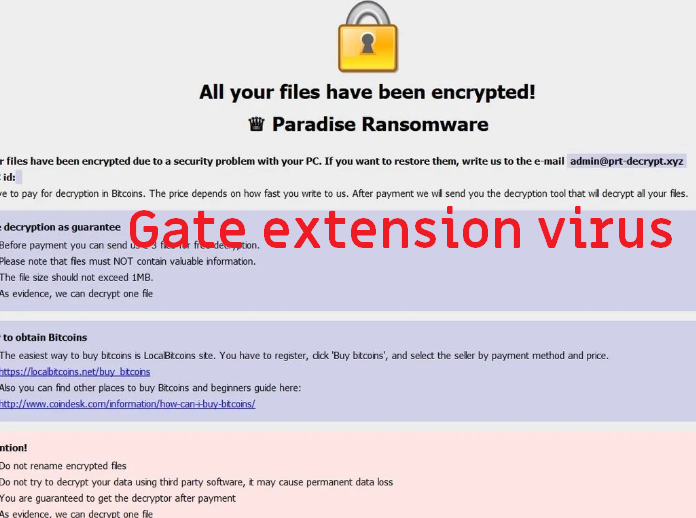
You do have the choice of paying the ransom for a decryptor but many malware researchers won’t suggest that option. First of all, paying will not ensure data decryption. Bear in mind that you are dealing with cyber criminals who will not bother to provide you a decryption utility when they have the choice of just taking your money. You ought to also keep in mind that the money will go into future criminal activities. It is already estimated that ransomware did billions worth of damage to different businesses in 2017, and that is an estimation only. People also realize that they can make easy money, and the more victims comply with the requests, the more attractive ransomware becomes to those kinds of people. Situations where you could lose your data are pretty frequent so it might be wiser to invest in backup. You could then proceed to file recovery after you uninstall Gate ransomware virus or similar infections. If you haven’t ran into data encrypting malware before, you may not know how it managed to get into your computer, in which case carefully read the following paragraph.
Ransomware distribution methods
Ransomware can infect your device pretty easily, frequently using such methods as adding infected files to emails, using exploit kits and hosting contaminated files on questionable download platforms. There’s often no need to come up with more sophisticated ways as many people are pretty careless when they use emails and download something. That does not mean more elaborate methods are not used at all, however. Cyber crooks attach a malicious file to an email, write a semi-convincing text, and falsely claim to be from a trustworthy company/organization. Topics about money are frequently used as people are more prone to opening those emails. Pretty frequently you will see big company names like Amazon used, for example, if Amazon emailed someone a receipt for a purchase that the user didn’t make, he/she would open the attached file immediately. There are certain things you ought to be on the lookout for before opening email attachments. It’s very important that you investigate who the sender is before opening the attachment. And if you are familiar with them, double-check the email address to make sure it matches the person’s/company’s real address. The emails can be full of grammar errors, which tend to be quite easy to notice. Another noticeable sign could be your name not used anywhere, if, lets say you are an Amazon customer and they were to send you an email, they would not use typical greetings like Dear Customer/Member/User, and instead would insert the name you have given them with. Infection is also possible by using unpatched weak spots found in computer programs. Weak spots in software are usually identified and vendors release updates so that malicious parties cannot exploit them to distribute their malicious software. However, as widespread ransomware attacks have proven, not everyone installs those patches. Situations where malware uses vulnerabilities to get in is why it’s critical that your programs are often updated. Regularly having to install updates may get bothersome, so you can set them up to install automatically.
What can you do about your files
When your computer becomes infected with ransomware, it’ll scan for certain files types and soon after they are found, they’ll be encoded. You will not be able to open your files, so even if you don’t notice the encryption process, you will know eventually. Look for weird file extensions added to files that were encrypted, they they’ll help recognize which ransomware you have. Some ransomware may use powerful encryption algorithms, which would make decrypting data potentially impossible. In a note, criminals will explain that they’ve locked your data, and offer you a method to decrypt them. You will be suggested a decryption program in exchange for money. The note should plainly display the price for the decryption utility but if it doesn’t, you will be proposed an email address to contact the crooks to set up a price. For already discussed reasons, paying the cyber criminals is not the suggested choice. Thoroughly consider all your options through, before you even think about buying what they offer. It is possible you have simply forgotten that you have made copies of your files. It may also be possible that you would be able to locate a free decryptor. Security specialists are in certain cases able to release free decryption utilities, if the ransomware is decryptable. Keep this in mind before paying the requested money even crosses your mind. If you use some of that money on backup, you would not face likely file loss again as your files would be saved somewhere secure. If you have stored your files somewhere, you may go get them after you fix Gate ransomware virus. If you’re now familiar with data encrypting malicious software is distributed, you should be able to safeguard your system from threats of this type. At the very least, do not open email attachments randomly, update your software, and only download from sources you know you may trust.
Gate ransomware removal
Implement an anti-malware tool to get the file encrypting malware off your system if it still remains. It might be quite difficult to manually fix Gate ransomware virus because a mistake might lead to further damage. Going with the automatic option would be a smarter choice. These kinds of utilities are developed with the intention of removing or even blocking these types of threats. Pick the malware removal utility that could best deal with your situation, and scan your system for the threat once you install it. Unfortunately, a malware removal tool unlock Gate ransomware files. Once the device is clean, you should be able to return to normal computer use.
Offers
Download Removal Toolto scan for Gate ransomwareUse our recommended removal tool to scan for Gate ransomware. Trial version of provides detection of computer threats like Gate ransomware and assists in its removal for FREE. You can delete detected registry entries, files and processes yourself or purchase a full version.
More information about SpyWarrior and Uninstall Instructions. Please review SpyWarrior EULA and Privacy Policy. SpyWarrior scanner is free. If it detects a malware, purchase its full version to remove it.

WiperSoft Review Details WiperSoft (www.wipersoft.com) is a security tool that provides real-time security from potential threats. Nowadays, many users tend to download free software from the Intern ...
Download|more


Is MacKeeper a virus? MacKeeper is not a virus, nor is it a scam. While there are various opinions about the program on the Internet, a lot of the people who so notoriously hate the program have neve ...
Download|more


While the creators of MalwareBytes anti-malware have not been in this business for long time, they make up for it with their enthusiastic approach. Statistic from such websites like CNET shows that th ...
Download|more
Quick Menu
Step 1. Delete Gate ransomware using Safe Mode with Networking.
Remove Gate ransomware from Windows 7/Windows Vista/Windows XP
- Click on Start and select Shutdown.
- Choose Restart and click OK.

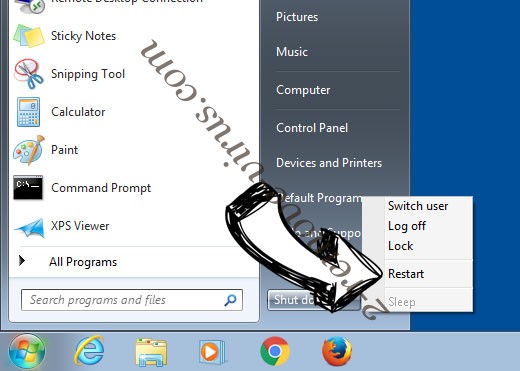
- Start tapping F8 when your PC starts loading.
- Under Advanced Boot Options, choose Safe Mode with Networking.

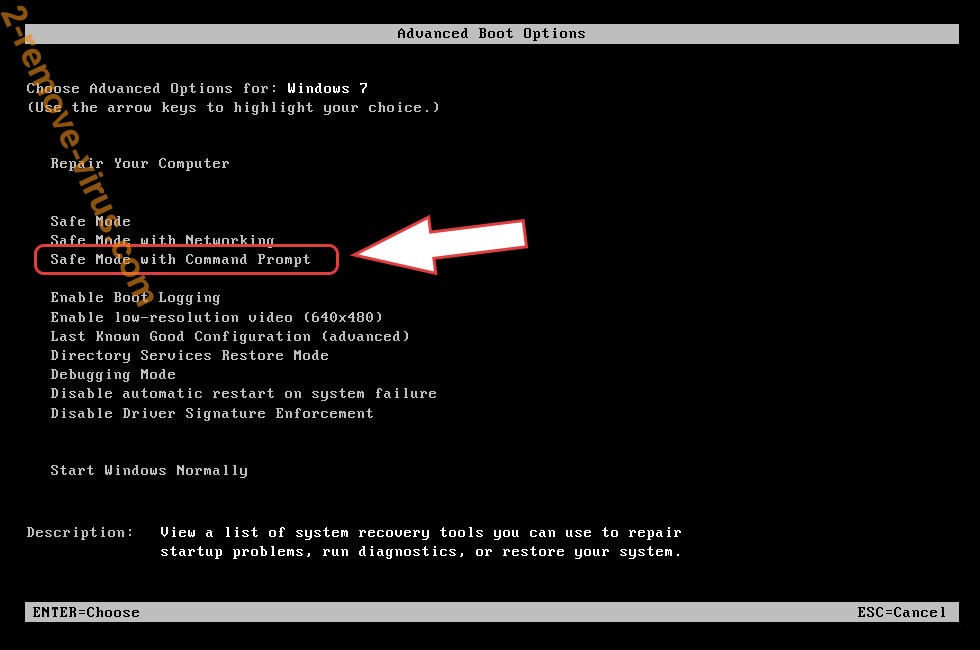
- Open your browser and download the anti-malware utility.
- Use the utility to remove Gate ransomware
Remove Gate ransomware from Windows 8/Windows 10
- On the Windows login screen, press the Power button.
- Tap and hold Shift and select Restart.


- Go to Troubleshoot → Advanced options → Start Settings.
- Choose Enable Safe Mode or Safe Mode with Networking under Startup Settings.

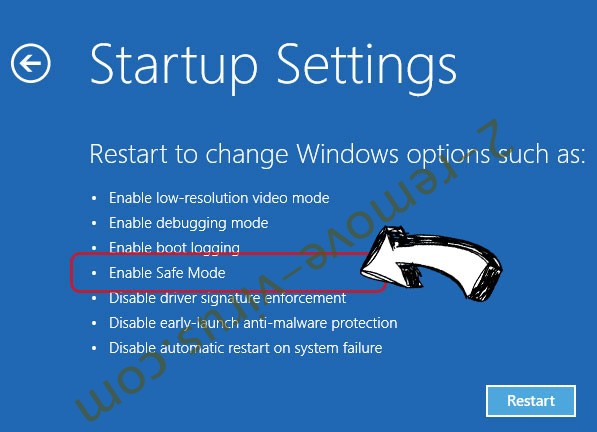
- Click Restart.
- Open your web browser and download the malware remover.
- Use the software to delete Gate ransomware
Step 2. Restore Your Files using System Restore
Delete Gate ransomware from Windows 7/Windows Vista/Windows XP
- Click Start and choose Shutdown.
- Select Restart and OK


- When your PC starts loading, press F8 repeatedly to open Advanced Boot Options
- Choose Command Prompt from the list.


- Type in cd restore and tap Enter.

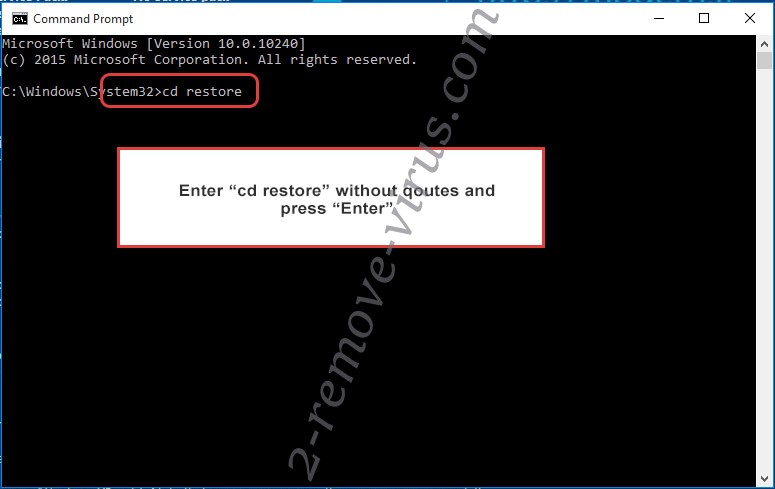
- Type in rstrui.exe and press Enter.

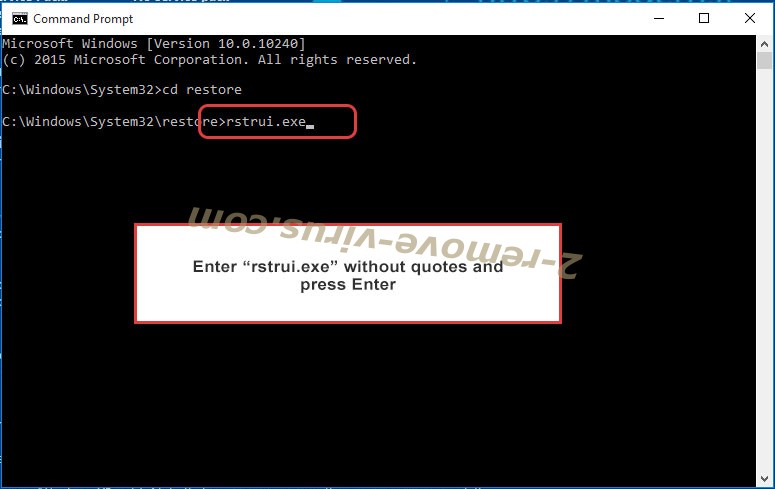
- Click Next in the new window and select the restore point prior to the infection.

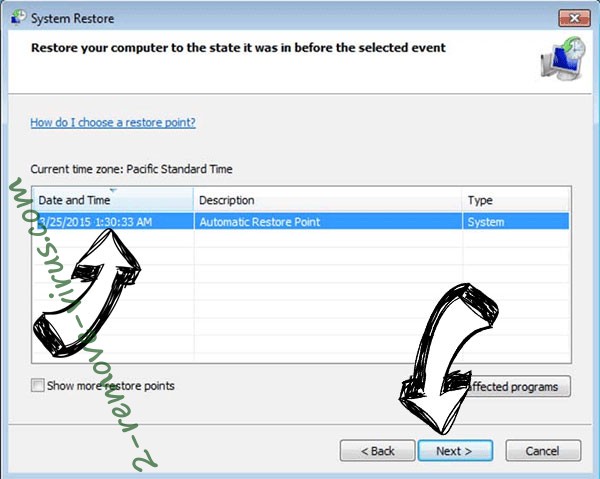
- Click Next again and click Yes to begin the system restore.

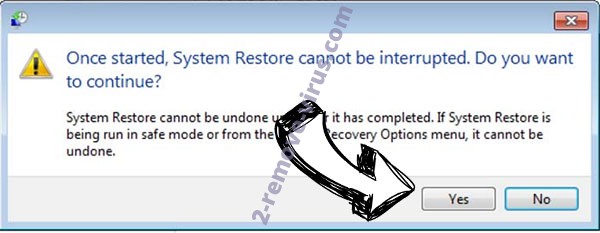
Delete Gate ransomware from Windows 8/Windows 10
- Click the Power button on the Windows login screen.
- Press and hold Shift and click Restart.


- Choose Troubleshoot and go to Advanced options.
- Select Command Prompt and click Restart.

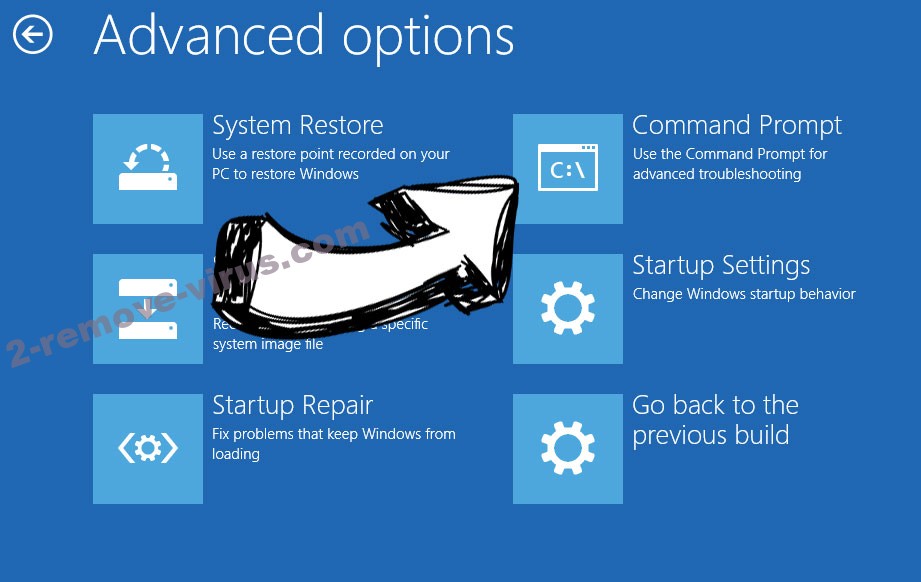
- In Command Prompt, input cd restore and tap Enter.


- Type in rstrui.exe and tap Enter again.


- Click Next in the new System Restore window.

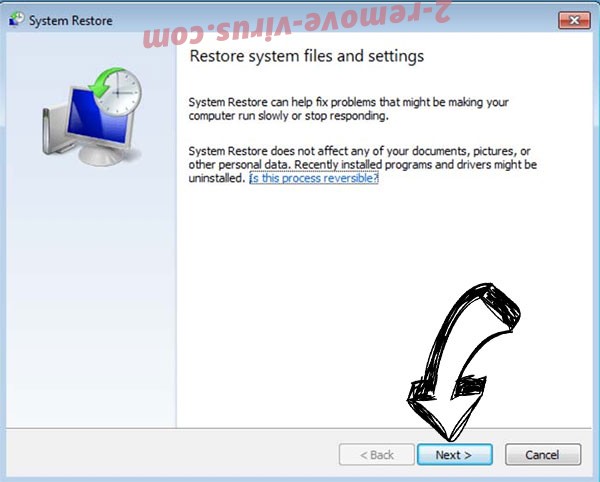
- Choose the restore point prior to the infection.


- Click Next and then click Yes to restore your system.


Site Disclaimer
2-remove-virus.com is not sponsored, owned, affiliated, or linked to malware developers or distributors that are referenced in this article. The article does not promote or endorse any type of malware. We aim at providing useful information that will help computer users to detect and eliminate the unwanted malicious programs from their computers. This can be done manually by following the instructions presented in the article or automatically by implementing the suggested anti-malware tools.
The article is only meant to be used for educational purposes. If you follow the instructions given in the article, you agree to be contracted by the disclaimer. We do not guarantee that the artcile will present you with a solution that removes the malign threats completely. Malware changes constantly, which is why, in some cases, it may be difficult to clean the computer fully by using only the manual removal instructions.
